Spring sunlight and rippling water make an irresistible combination, and a riverside stroll invariably reveals fresh arrivals and newly emerged animals.
Over wider stretches of river, sand martins (recently returned from Africa) whirl and chatter as they hawk for insects and size up bankside burrows. Common sandpipers, which also migrate here from the south, flicker upstream on bowed wings, while in uplands goosanders prospect for nest sites in hollow trees.
Aquatic insects are stirring, too. Alderflies with tented wings patterned like leaded glass crawl on bankside vegetation, the first mayflies are on the wing and river skaters prowl the surface.
Peer into the shallows to see minnows, which become more visible in spring as the males leave backwaters and come into breeding condition. Bullhead are spawning as well, the males guarding eggs laid under stones.
All illustrations by Dan Cole/The Art Agency, unless otherwise credited.
Common sandpiper (Actitis hypoleucos)
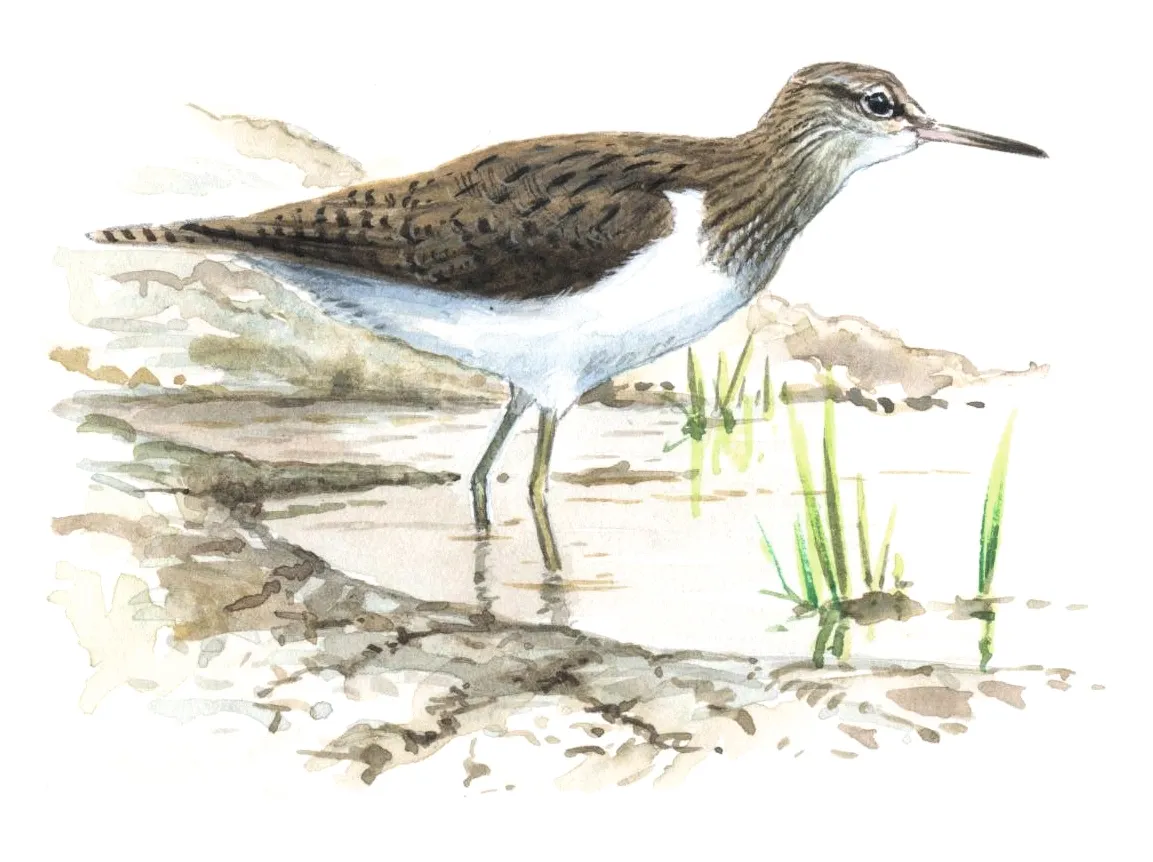
This small wading bird is recognisable by its brown upperparts, white belly and short green legs. A summer visitor, it breeds along fast-flowing rivers as well as lakes and reservoirs in Scotland, Wales, Northern Ireland and northern England. At other times of the year, passage migrants can be found elsewhere in the UK on freshwater areas or estuaries
You might see them bobbing up and down in the mudflats, looking for food, before taking off in stiff-winged flight and revealing their white wingbars. Insects, worms, crustaceans and molluscs all make a good meal for a common sandpiper.
Sandpipers lay four eggs on average, in shallow pits furnished with dead leaves. Both parents take turns to incubate the egg over a period of three weeks.
Sand martin (Riparia riparia)
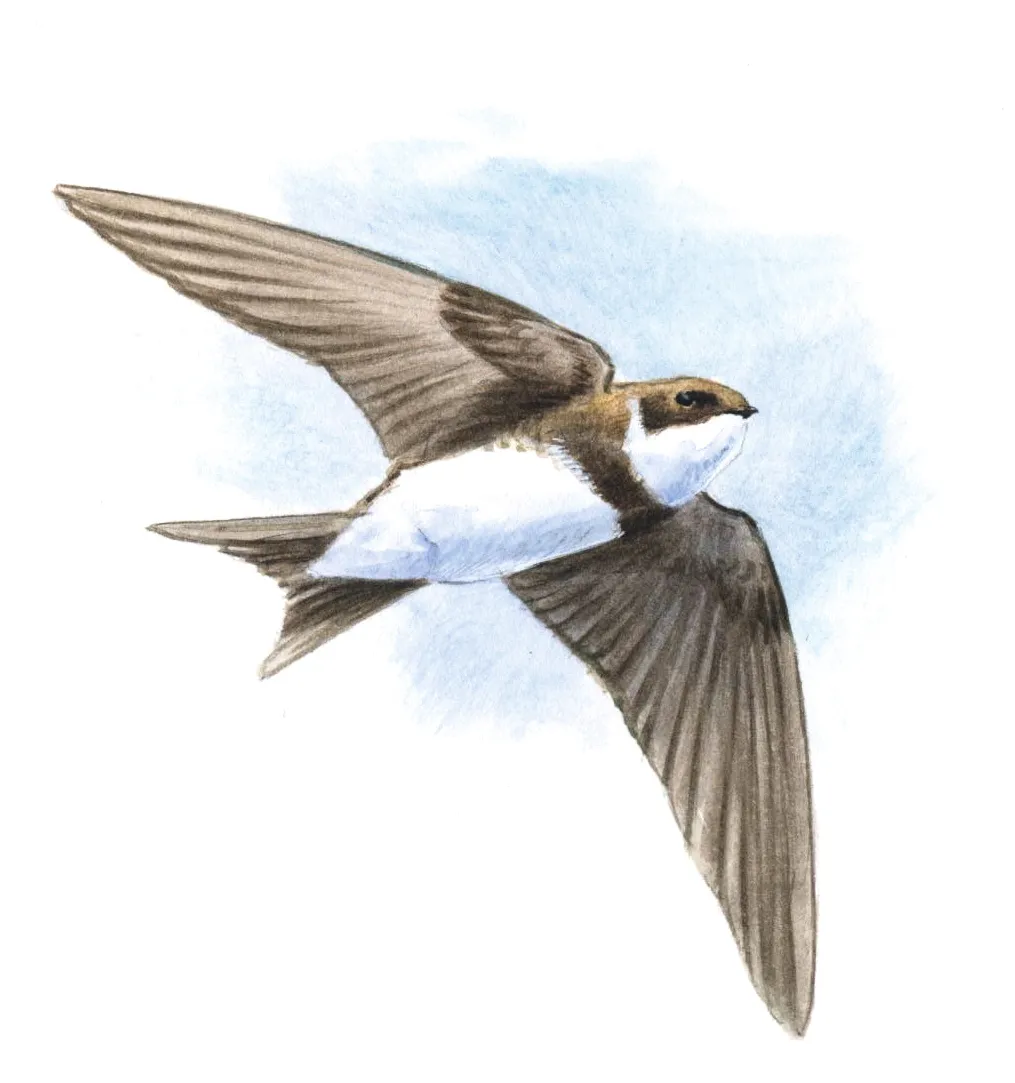
A common summer visitor to the UK, these small martins (just 12—13cm) arrive in March, nesting in colonies along rivers and other freshwater bodies. Nests are built in burrows up to a metre deep within sandy banks, which gives them their name. In winter, the colonies migrate back to Africa.
Sand martins are brown on top and white underneath, with a short, forked tail. The thin greyish chest band helps to distinguish them from house martins.
Still, this agile flier is so quick in flight that the chest band can be hard to spot. It is generally more productive to listen out for their sandpaper-like call, which they emit almost continuously when flying.
Their diet includes flies and other insects who have their larval stage in the water, so they are usually found hunting around bodies of fresh water.
The sand martin's scientific name, Riparia riparia, is an example of a tautonym, where the genus and specific name are the same.
Goosander (Mergus merganser)
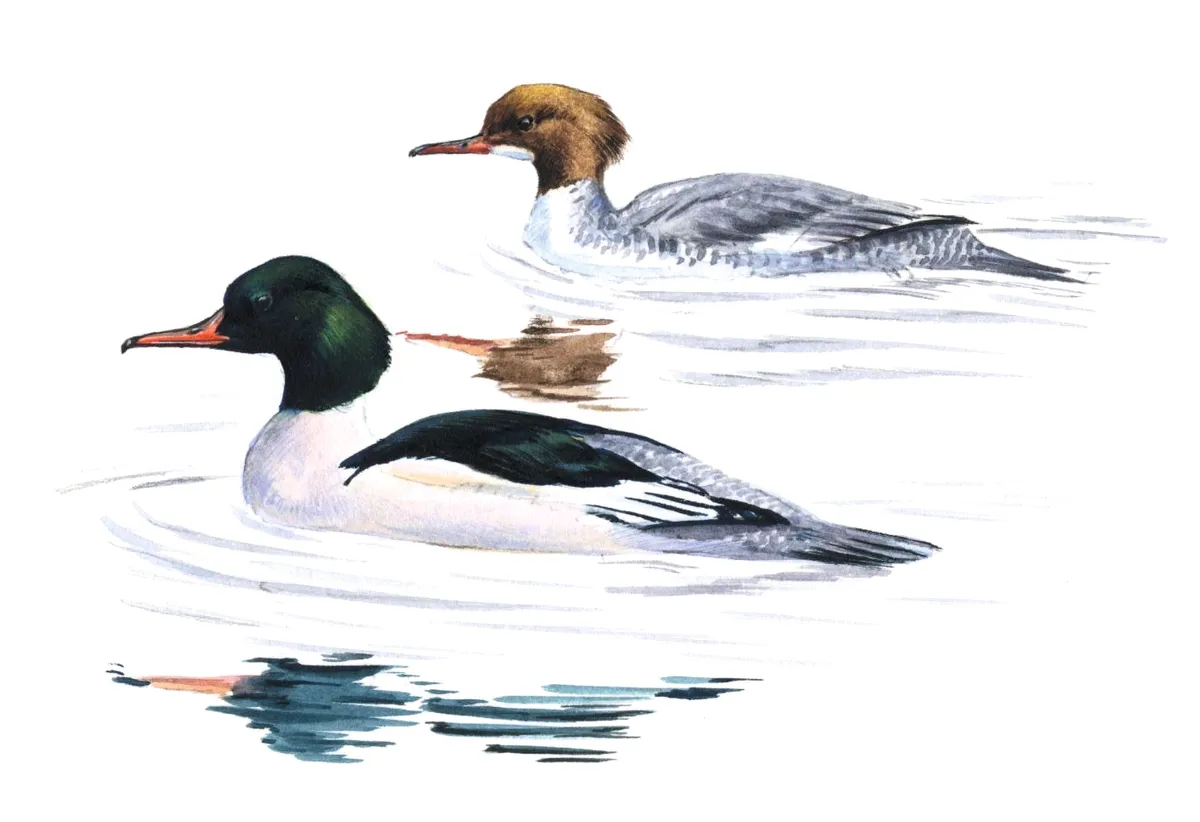
A member of the ‘sawbill’ family, the goosander is a diving duck and employs its long, serrated bill to snag fish with ease. It’s sociable and teams up with other goosanders to hunt in packs.
They are medium-sized ducks but quite long. Males are white with dark-green heads, black bills and red bills; females are grey with a gingery-red head and white throat.
Since establishing a UK breeding colony in 1871, it nests in tree trunks beside fast-flowing rivers throughout the north and west. This means that chicks must brave a long drop when just hatched, meeting their parents at the bottom, who will lead them to water.
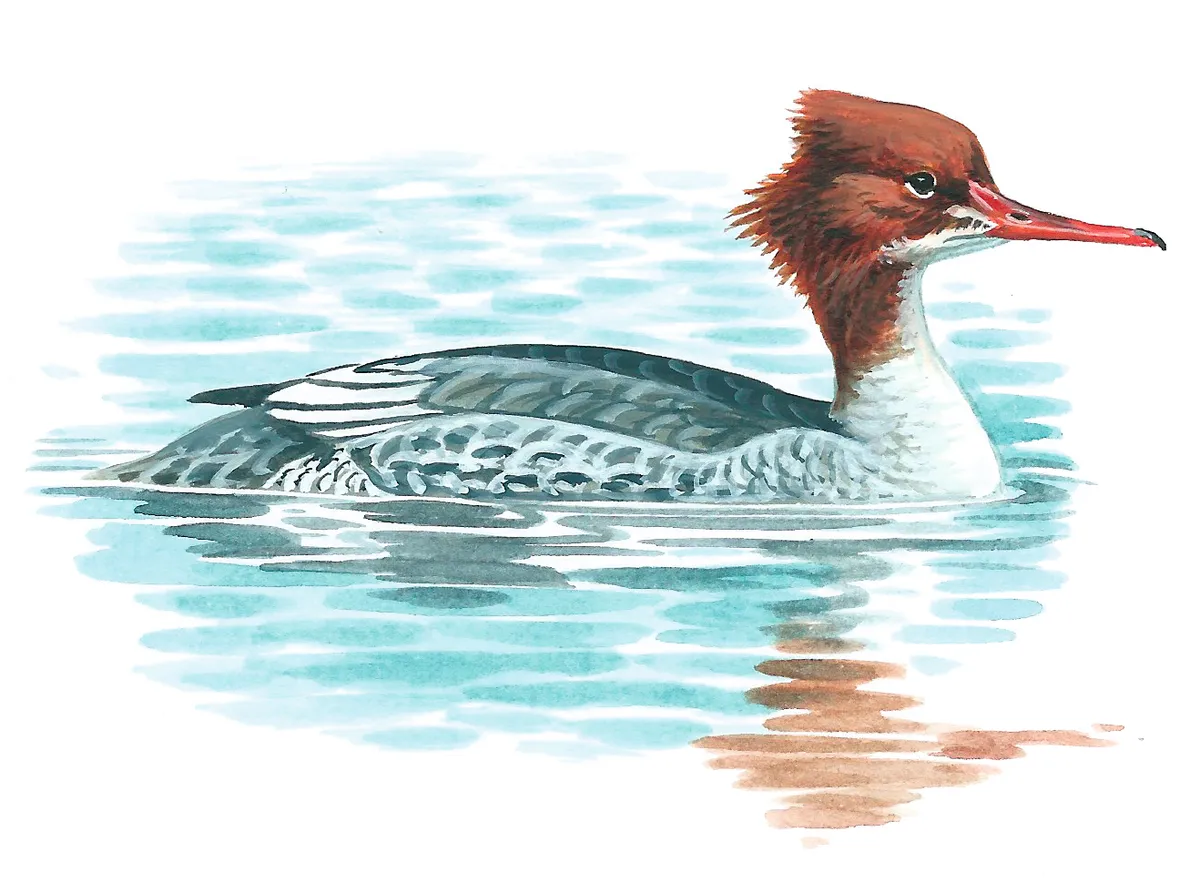
In midsummer, drakes (male ducks) under lie low in their ‘eclipse’ plumage, as they moult their feathers. It can be tricky to identify moulting ducks, but our guide to the eclipse-plumaged drakes of 12 British species should help. Note that eclipse plumages vary between individual birds.
Otter prints and spraint (Lutra lutra)
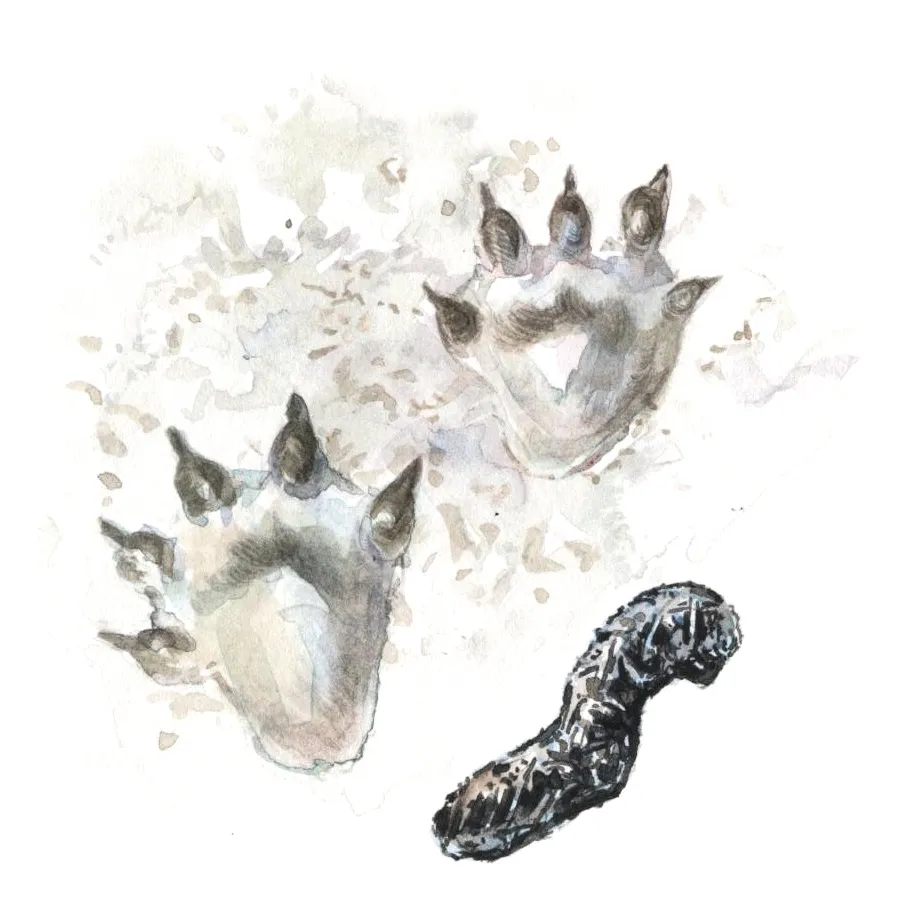
The footprints of otters have five toes (not four as in foxes or dogs) above a large pad mark. Their spraint smells sweet, not fishy like a mink’s. They deposit spraint to mark their feeding territories to other otters – these can be stretches of river up to 20km long, and it's one of the most distinctive of animal droppings.
Otters are a good example of the success of conservation efforts. In the 1970s, it was noted that otter habitats were subject to pollution by organochlorine pesticides, and otters themselves were viewed as threats to fish populations and hunted by humans. Following a ban on hunting and organochloride pesticides, by 2011 otter populations were no longer listed as threatened in the UK by environmental groups.
Otters enjoy a diet of fish and eels, with frogs a staple in the spring. They also occasionally eat waterfowl when available.
Cubs can be born at any time of year, but usually in the summer. The mother will give birth in a holt near the river, usually a burrow beneath a system of tree roots. When mothers have cubs in tow, they can reduce the production of spraints so that they are less likely to be detected.
The otters's scientific name, Lutra lutra, is an example of a tautonym, where the genus and specific name are the same.
Bullhead/Miller’s thumb (Cottus gobio)
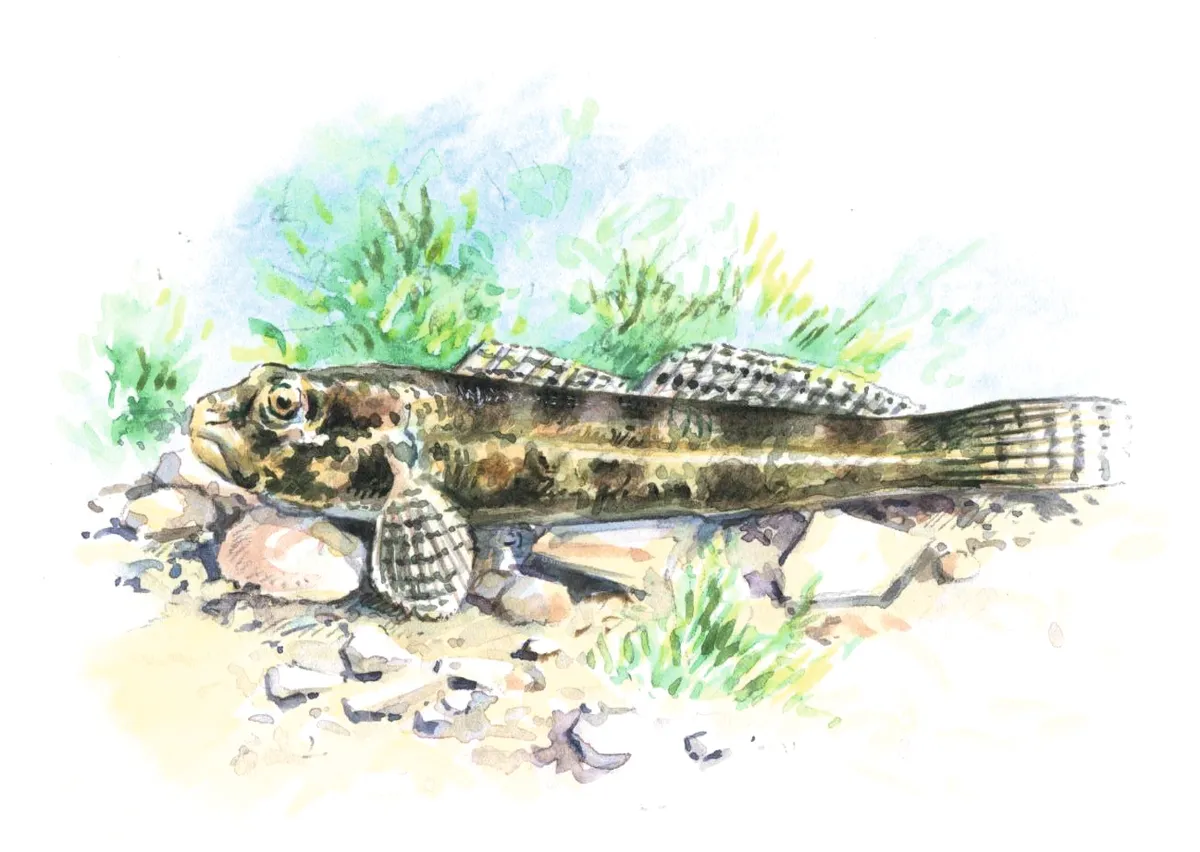
The bullhead is a fat fish, growing up to 8cm, with a flat-topped head and large pectoral fins at its sides. Its patterned skin gives it good camouflage. The head is much larger than the rest of the body so that the goby can hide securely, facing out of a crevice in the stones at the bottom of a well-oxygenated river.
The bullhead discourages predators with its hard to swallow dorsal spines. It feeds on small invertebrate prey in a watch-and-wait manner, ambushing them from its camouflaged hides in the rocks.
Minnow (Phoxinus phoxinus)
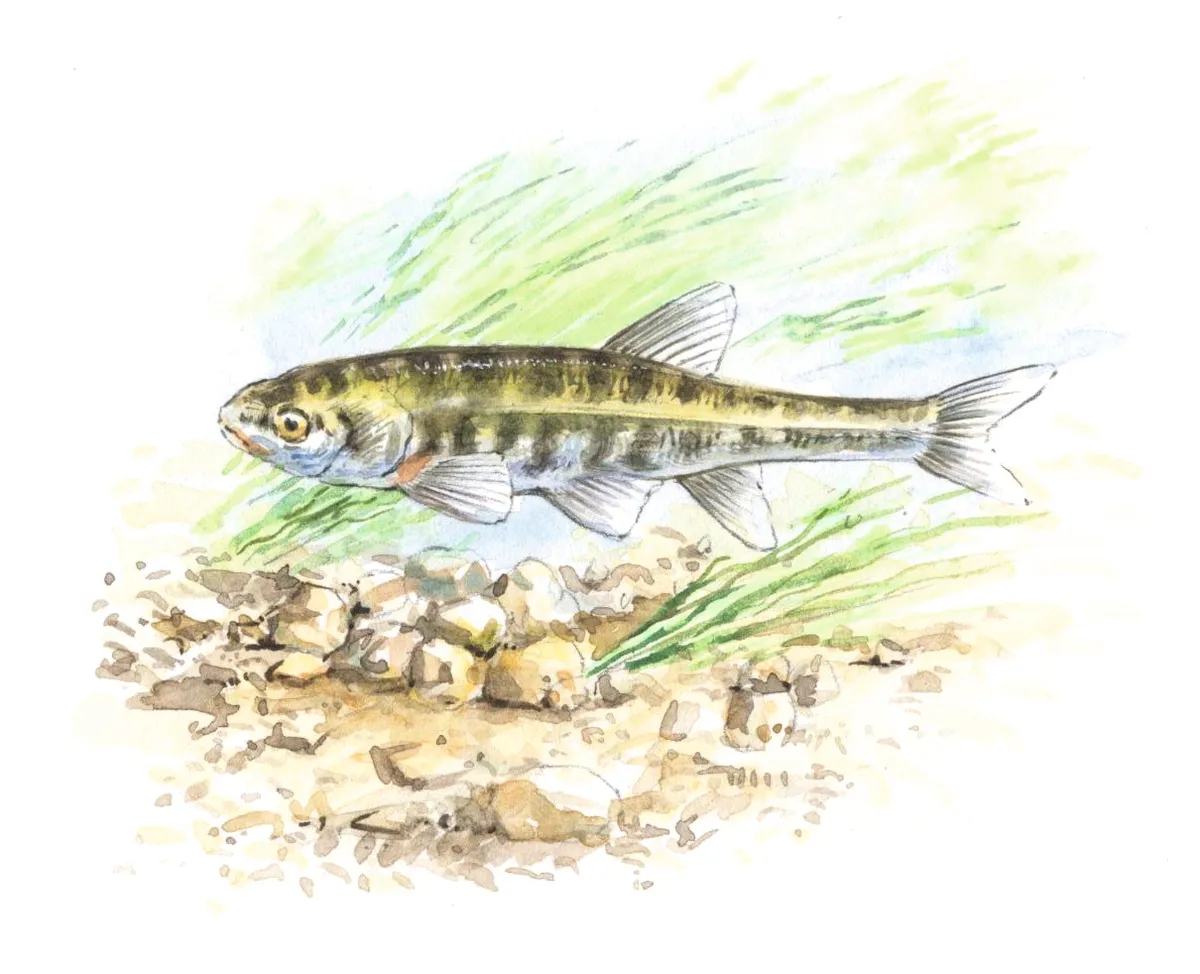
Minnows can grow up to 5cm. They are a slim fish, with dark mottling and a dark stripe along the flanks. They are found in the shallows of cool bodies of high-oxygen waters and can feed on algae, plants and small marine invertebrates.
These fish are gregarious and are often in large shoals when spawning, which they do upstream in areas with gravel substrate. It is thought that gravel is chosen over sand as it provides important hiding places for the minnows. They spend the winter in deep pools with weak currents.
The minnow's scientific name, Phoxinus phoxinus, is an example of a tautonym, where the genus and specific name are the same.
Water moss (Fontinalis antipyretica)
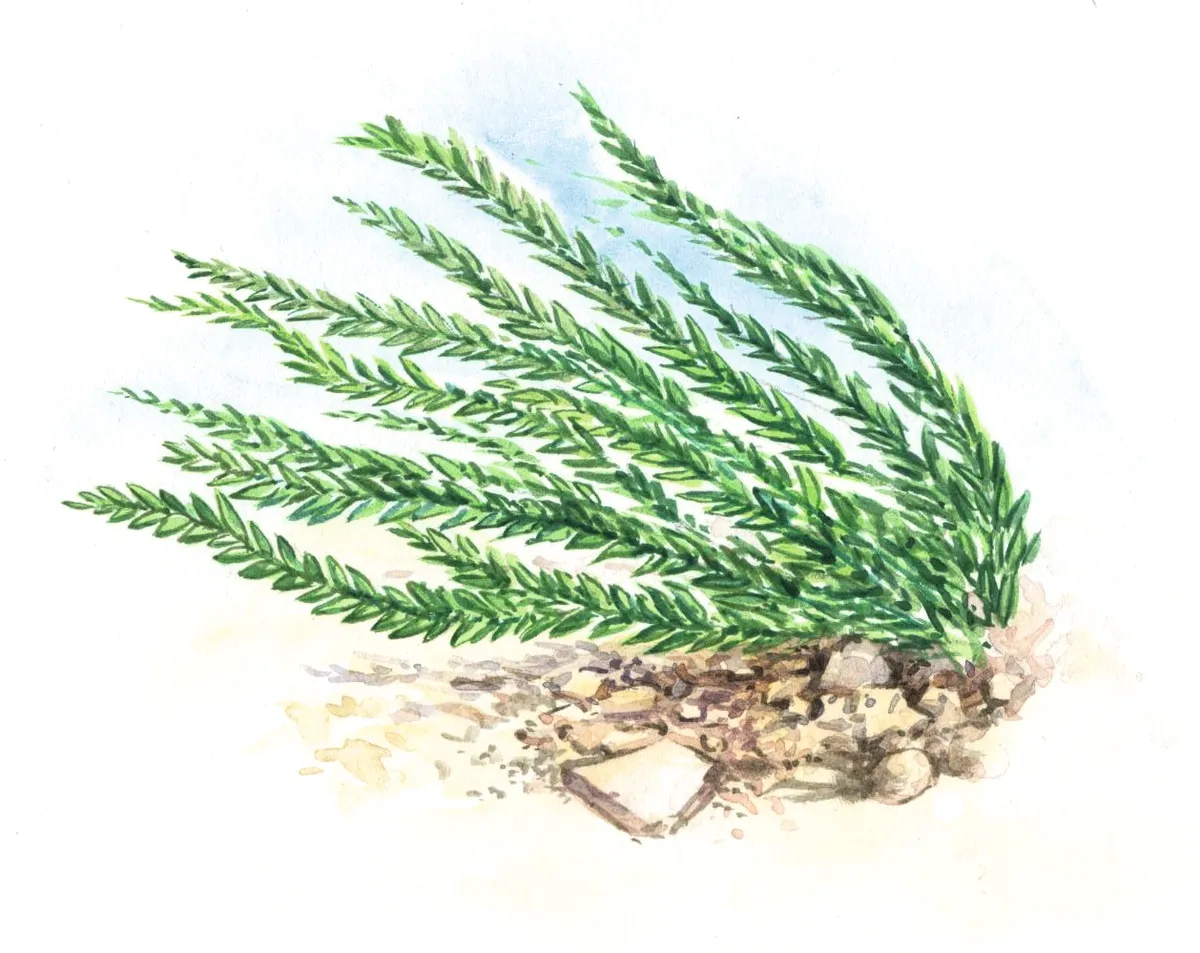
This is the UK’s largest aquatic moss, with long stems up to 20cm in length. It attaches to stones or submerged tree roots, where it sways in river currents. The bright-green leaves are like tightly folded triangles of paper.
The moss can tolerate periods of time above the water and is also found in variable habitats according to water quality. When the riverbeds are nutrient-poor, however, the moss is usually absent in favour of better adapted species of Fontinalis.
Opposite-leaved golden saxifrage (Chrysosplenium oppositifolium)
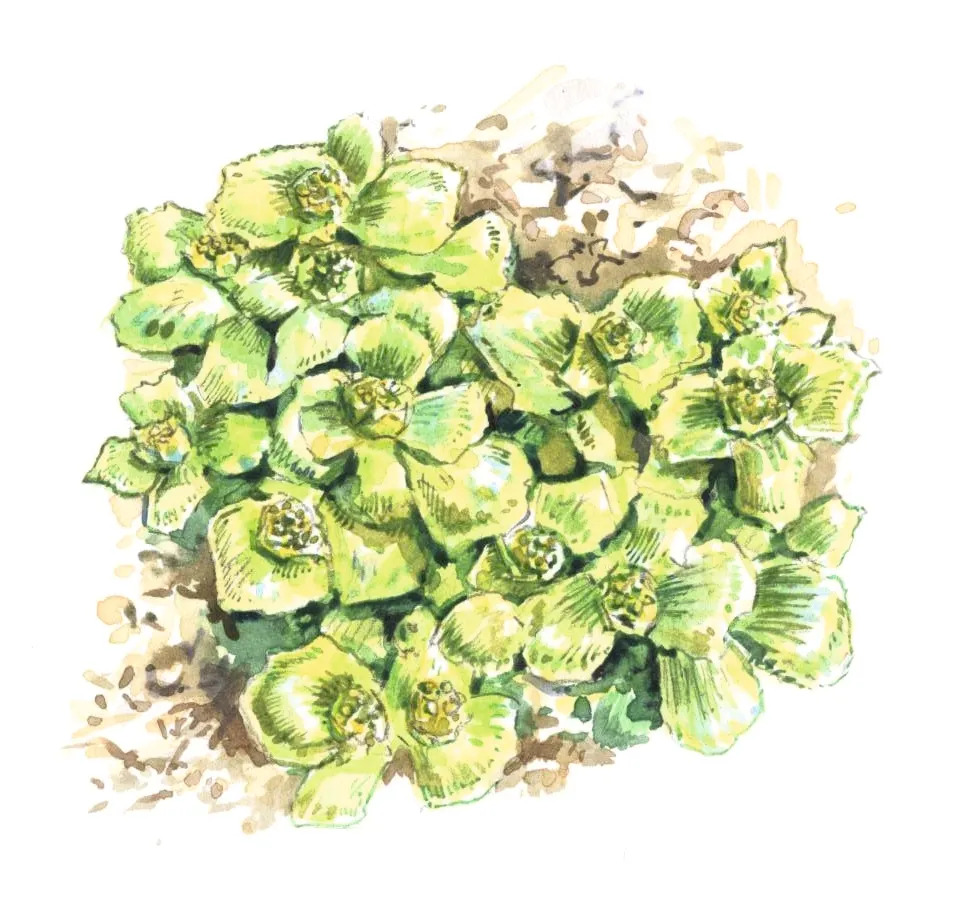
This creeping plant has tiny gold flowers and is not aquatic. It bursts up in veins of gold in the springtime alongside damp riverbanks, often in woods.
It is easily confused with alternate-leaved golden saxifrage, a superficially similar plant, though the leaves do not lie directly across from each other on the stem, as in opposite-leaved golden saxifrage. The opposite-leaved plant prefers acidic soils, and the alternate-leaved saxifrage is less common and widespread.
Butterbur (Petasites fragrans)
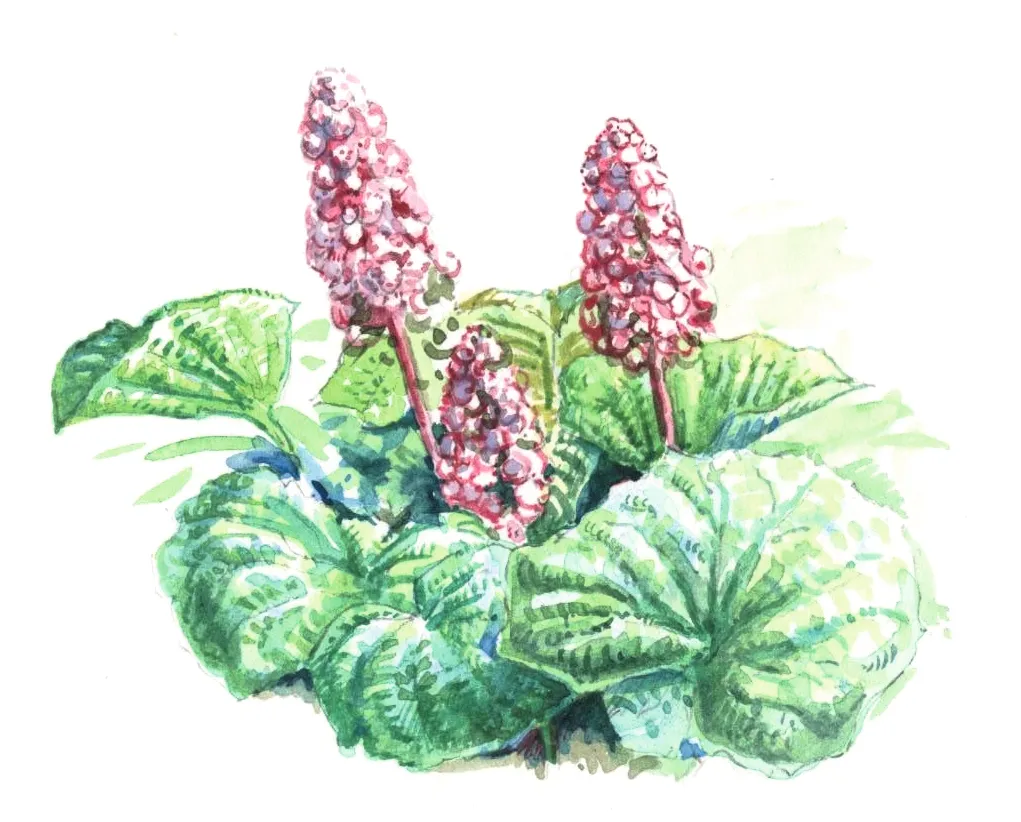
The pink flower spikes of this plant appear from March to May, before the huge, round leaves unfurl. The leaves give the plant its name as they were historically used to wrap butter. As the flowers are blooming brightly before many other flowers appear, they are popular with bees.
The plants are found in wet meadows and by the sides of rivers and streams. The butterbur is also used in medicines, as an anti-inflammatory to work against headaches and stomach upsets.
Alderfly (Sialis lutaria)
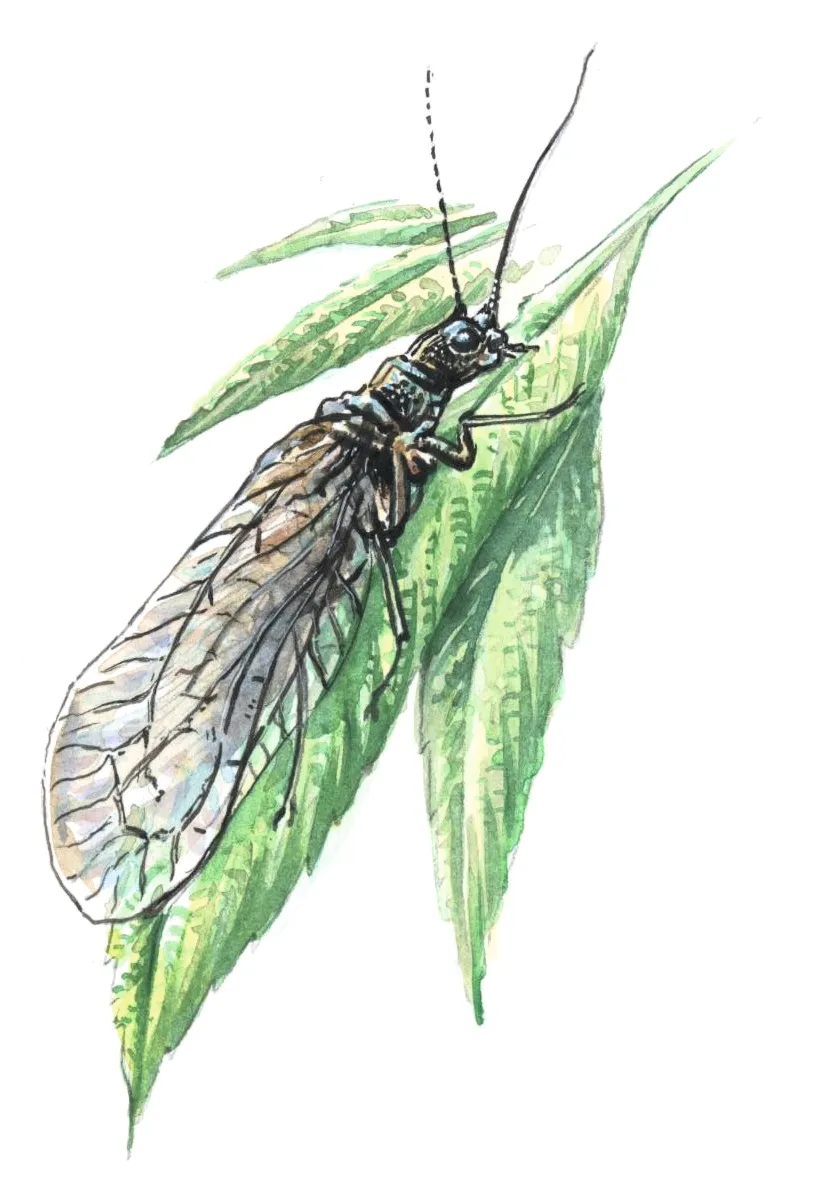
This sluggish fly can be seen resting on waterside vegetation. It is 10-15mm long and brown, with strongly veined wings and long antennae. Unlike stoneflies, they do not have tail bristles.
Alderflies mate at night and lay their fertilised eggs on vegetation overhanging the water. When they hatch, the termite-like larvae drop straight into the water to begin development. It takes two years of feeding on other invertebrates for the larvae to reach adulthood
Large dark olive mayfly (Baetis rhodani)
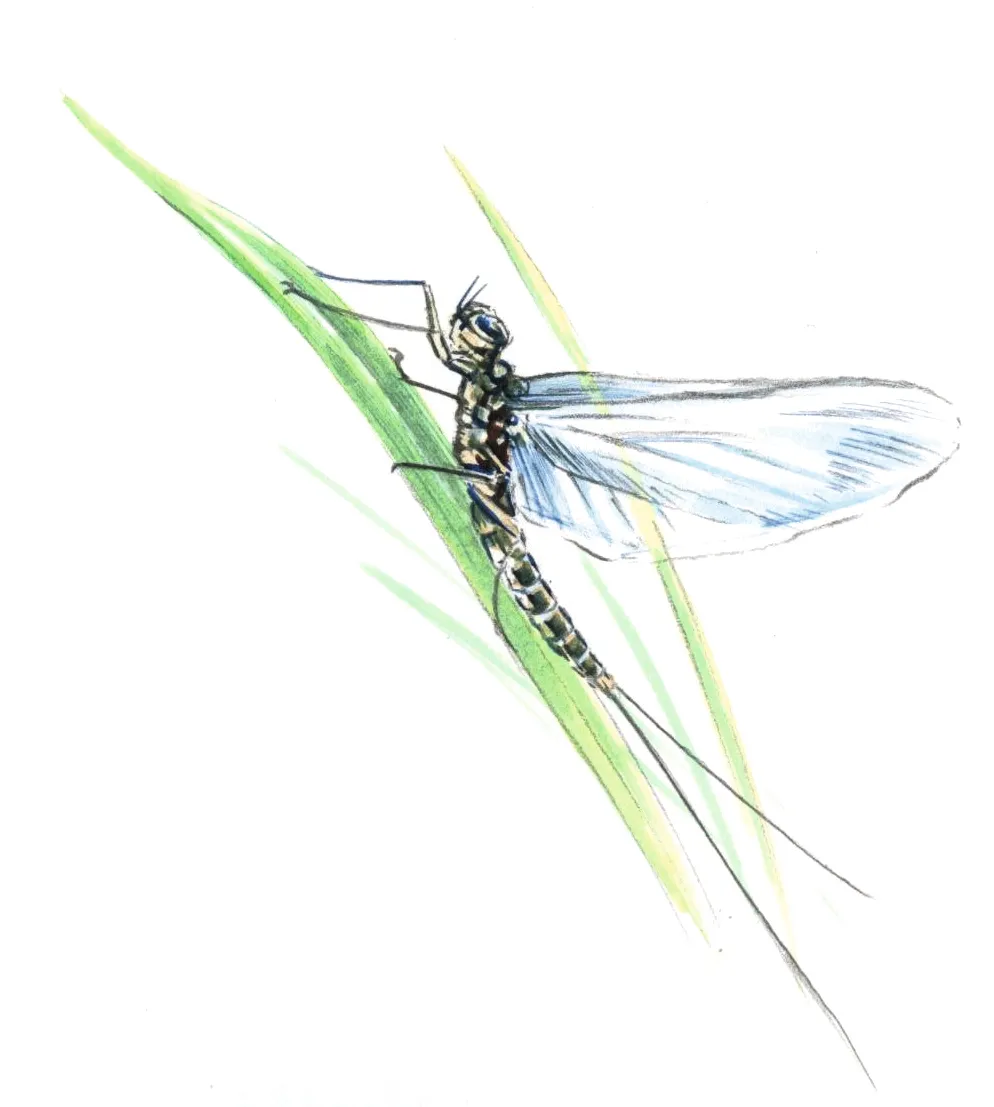
These flamboyant little insects can grow 8–12mm long, or up to 18mm long including tails. Adults have only two tails and are on the wing from January to April. The abdomen is grey in males or red-brown in females.
Larvae can be found in stony, fast-flowing streams and also enjoy highly vegetated areas with high calcium content. They have three tails and swim between vegetation patches, feeding on invertebrates.
River skater (Aquarius najas)
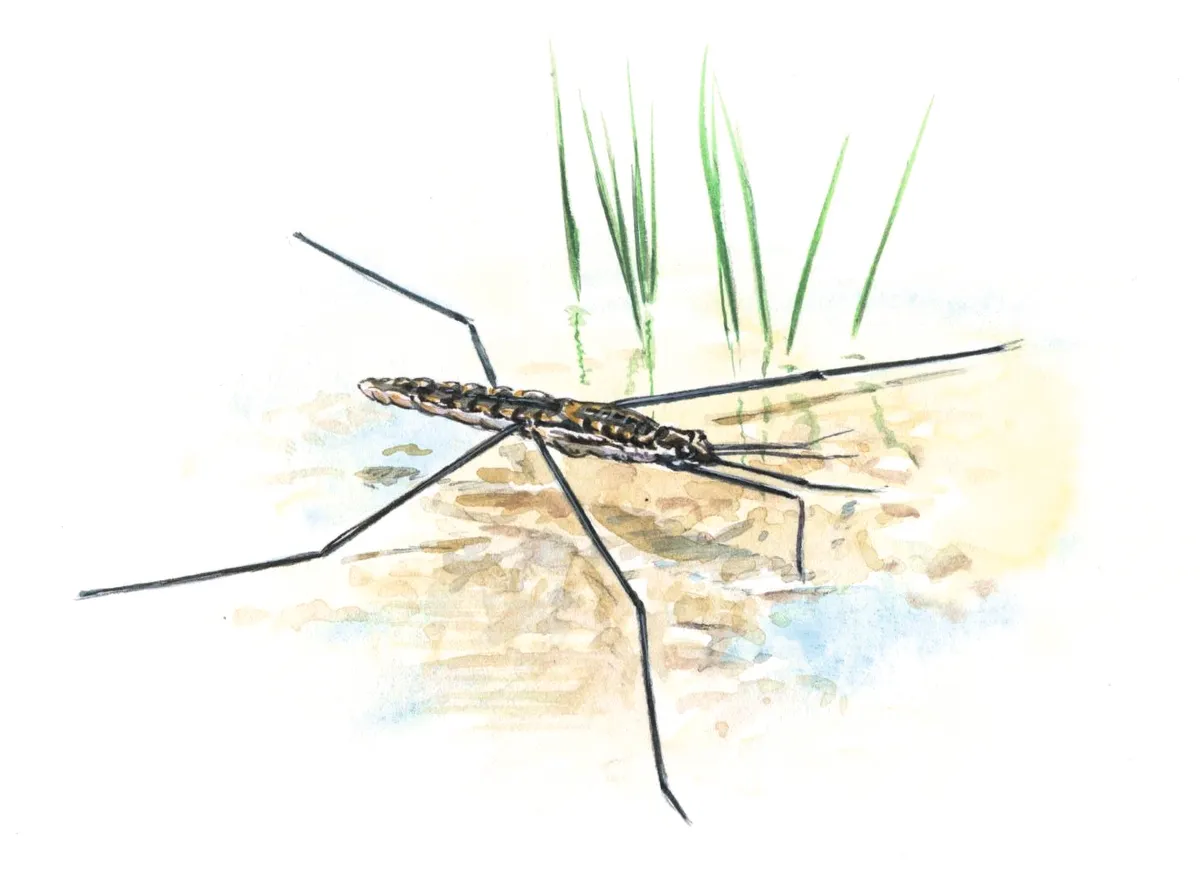
This bug is 13–17mm, so larger than a common pond skater (below). It is at home in fast-flowing rivers or lakes with water movement and floats on the surface. It is mainly found in northern and western parts of the UK.
Even when they are fully grown, they do not have wings and find it difficult to colonise new areas. The adults hibernate in the winter, hidden among stones on the river’s edge.
The river skater males will climb on to a female in the spring, hitching a ride on her and often sharing her catch as they mate.
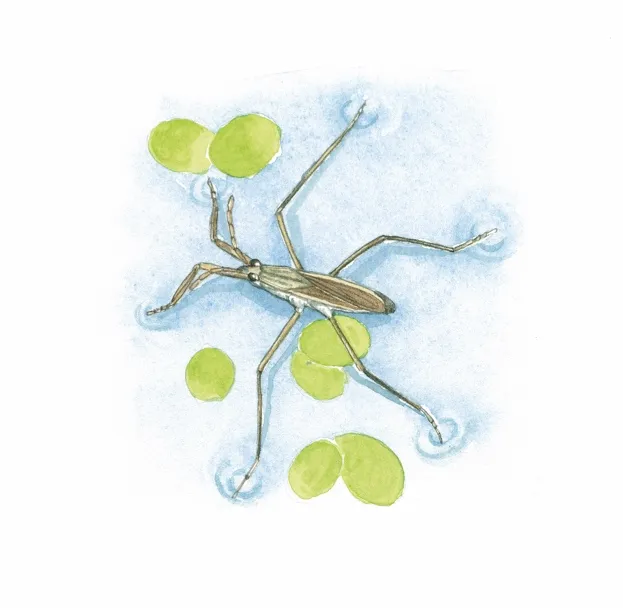
Main image: Sand martin in Germany. © Erhard Nerger/imageBROKER/Getty
